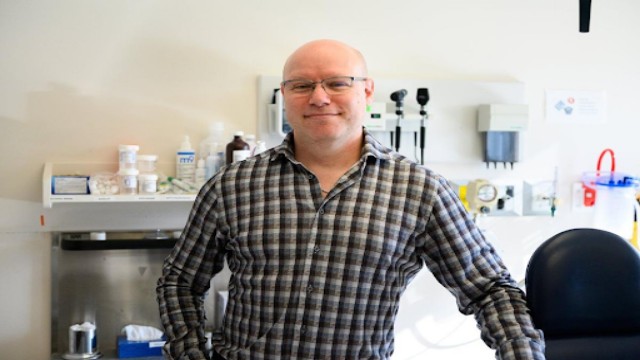
Dr. Max Levine is a kidney transplant surgeon at the University of Alberta Hospital. CTV News
In a groundbreaking medical achievement, an Alberta surgeon has performed Canada's first robot-assisted kidney transplant. This innovative procedure has given Carmen Newchuck and her family new hope and more time together, thanks to a life-saving match with her husband.
Two years after surviving COVID-19, Carmen Newchuck was still struggling with her health. She went to the hospital with severe chest and leg pains, only to learn she was in complete kidney failure. "If I didn’t come in on that Monday on June 20th, I wouldn’t have been here the Wednesday," Newchuck shared.
Newchuck was diagnosed with thrombotic microangiopathy (TMA), a genetic condition causing anemia and severe kidney damage. She needed a donor whose blood type, tissues, and cells matched hers perfectly. Remarkably, her husband, Ernie Peters, was a perfect match. "Long shot, but it came through. It was nice to be able to do this for each other and not have to involve anyone else and have them make a sacrifice," Peters said.
Dr. Max Levine, a kidney transplant surgeon at the University of Alberta Hospital, offered Newchuck a chance to undergo a robot-assisted surgery, a technique used in other operations but never before in a kidney transplant. This method promises faster recovery, smaller incisions, and lower risks of complications. "With robotic-assisted surgery, you are able to do all that surgery inside with a camera without making a large opening externally to get all instruments in," explained Dr. Levine.
Traditional transplant surgeries require an incision of 15 to 30 centimetres, but the robotic approach uses five small cuts, each about two and a half centimetres long. "You know, there are days that I feel like I haven't even had surgery other than the side effects from the anti-rejection medication," Newchuck said, reflecting on her experience.
Six weeks after her surgery, Newchuck is recovering better than expected. "Thanks to my husband, I have a healthy kidney," she expressed gratefully. Dr. Levine is optimistic about the potential of robotic-assisted surgery and plans to perform more procedures to demonstrate its benefits.















